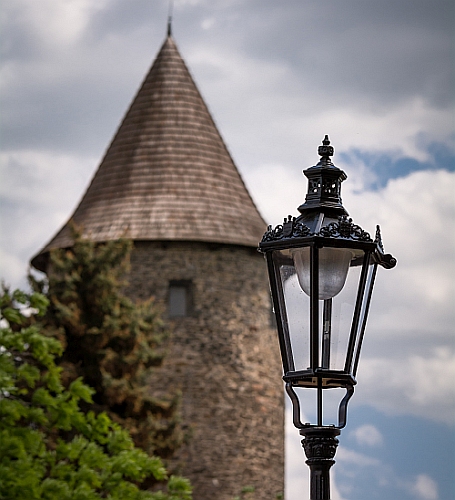The Kolín Synagogue
Kolín
The Kolín synagogue is the largest synagogue built in the Czech Republic until the 18th century, and outside of Prague it is the oldest and most valuable monument of its kind in the country. It was built on the site of an older wooden house of prayer as early as the turn of the 14th and 15th centuries. The inscription of a date on the memorial stone inserted into the eastern façade is the evidence. –
The house no. 126 used to belong among the most important buildings of the Kolín ghetto, as it was used as a Jewish school since 1654. Its original medieval core consists of a visually different left part, which is decorated with a late Baroque façade from the second half of the 18th century. After 1782, the original school building began to be used as the rabbi’s home. In 1844-1846, a new classicist school building was added to the house on the location of the alley leading to the synagogue, which forms the right part of the building. On the front façade there is a memorial plaque dedicated to more than 2,200 members of the Jewish community deported from the former Kolín Oberlandrat during the Second World War. Only 135 of them lived to see the end of the war. The synagogue, which is one of the oldest and most valuable monuments of its kind in the Czech Republic, is accessible through an entryway on the ground floor of the House no 157.
Its existence is documented already before the year 1422. The house owes its present early Baroque appearance to the reconstruction completed in 1696. In 1721 and 1815 the synagogue was significantly enlarged by additions of the premises on the sides. It served its original purpose until the actual dissolution of the Jewish community in Kolín in 1953. The interior preserves early Baroque stucco decoration and the ornamental Torah ark (aron ha-kodesh) from the end of the 17th century.
The synagogue is open all year round and can be entered through the Town Information Centre in Kolín, located at Na Hradbách Street no 157.


